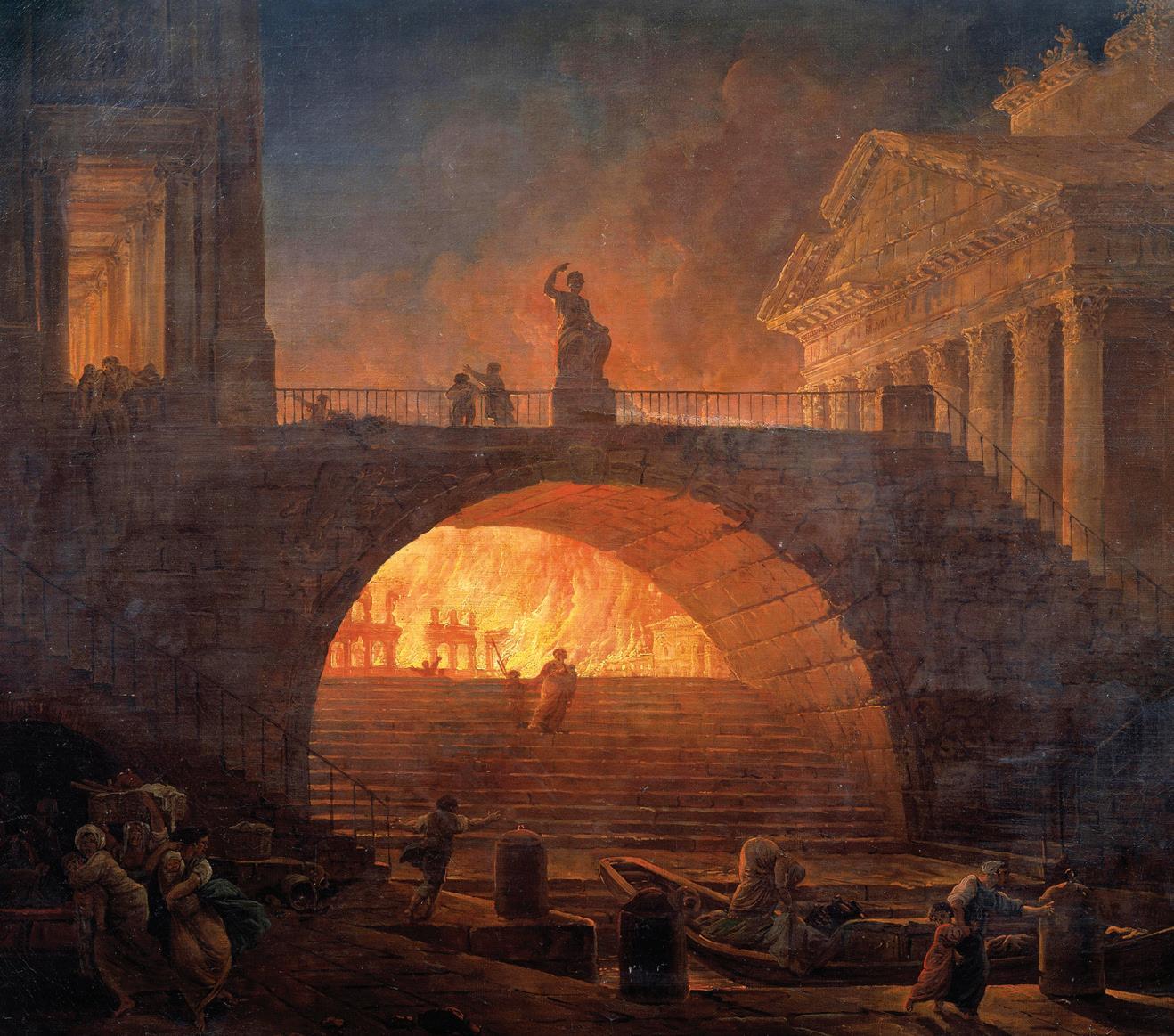
5 minute read
Age of the Martyrs
by Jessica Bunn
Our women’s Bible study recently celebrated completing a deep study of the Book of Acts. The study took almost an entire year. We read it line by line, discussing the characters, events, and message of the saving gospel of Jesus Christ amidst a rich historical backdrop of a world turned upside down. Without doubt, the most central character that arose in our study, other than the Holy Spirit, was the Apostle Paul. His conversion, life, and ministry amazed and inspired us all. As we approached the last verses of Acts, many of our participants were curious to know what happened to Paul, the apostle credited with writing almost half the books of the New Testament. How had his life ended?
To answer that question, I appealed to the writings of the Early Church historian Eusebius (Ecclesiastical History) and secular Roman historians. They described Emperor Nero’s escalating persecution of Christians, especially following the Great Fire of Rome in AD 64. Of the 14 districts of Rome, 10 completely burned to the ground. Of the four remaining areas, two were predominantly Christian. The citizens of Rome accused Nero of starting the fire himself, and nothing he did could dissuade them. In response, Nero blamed the two Christian districts for setting the blaze. As Tacitus writes in The Annals, “Accordingly, an arrest was first made of all who pleaded guilty [of being Christians]; then, upon their information, an immense multitude was convicted, not so much for the crime of firing the city, as of hatred against mankind.”
Many historians agree that it is quite likely that the Apostle Paul, who had continued to preach and travel after the concluding verses of Acts, was also arrested at that time with many others. Eusebius writes that Paul was placed in the infamous Mamertine Prison. The historian Sallust described the prison as “the House of Darkness, known everywhere for its neglect, darkness, and stench, which gave it a hideous and terrifying appearance” (The War with Catiline).
It is thought that Paul may have spent up to two years in this horrifying prison. However, we mustn’t forget what kind of man he was or what kind of love he had for Jesus, even in the depths of the dungeon. Story has it that, while Paul was awaiting his sentence of death by beheading, a crystal-clear spring bubbled out of the prison floor. Paul, being the man he was, put the spring to good use and began baptizing fellow prisoners who had decided to believe in the Lord Jesus.
Today, the Mamertine Prison is now a church, and there is still evidence of a place where water flowed through the lower-level floor of the old dungeon. And doesn’t this ring true with all we know of Paul’s adventures and writings from the New Testament? I can imagine he was preaching, encouraging, praying, worshiping, and baptizing until his last shackled walk down the Ostian Way. Perhaps he was remembering another road on another day, many years before, when Jesus had called him by name. Kneeling in the dust, in the shadow of his executioner, Paul knew the race was almost run. Perhaps he thought, just before the sword bore down, “To live is Christ and to die is gain” (Philippians 1:21).
Those of us who believe and follow Jesus wrestle with the hypothetical question, “What if it were me?” The unbelieving world may never understand the degree of faith that results in such a serious question. Today, secular culture often scoffs at martyrdom. In her book, The Myth of Persecution: How Early Christians Invented a Story of Martyrdom, author Candida Moss argues that most of the stories from early church history regarding persecution, martyrdom, and torture are purely fictional. Some writers have even accused missionaries of “stupidity” and martyrs of “getting what they deserve” for putting themselves in danger. It is important to remember that Nero accused the Christians of not only setting fire to Rome but of “hating mankind.” We live in a culture that is increasingly hostile to our faith because we, like the early Christians in Rome, refuse to participate in the pagan practices of the day.
In the end, however, just as Paul wrote, our response and perspective depend on love—a very specific kind of love. “For I am convinced that neither death nor life, neither angels nor demons, neither the present nor the future, nor any powers, neither height nor depth, nor anything else in all creation, will be able to separate us from the love of God that is in Christ Jesus our Lord” (Romans 8:38–39).
Paul had known and experienced the unforgettable love and forgiveness of Jesus. The last and self-proclaimed least of the apostles had chosen Christ’s way above all others.
At our end, may we have that sort of relationship with our Lord. May we know the love that withstands any external pressures. May we be rooted and grounded and built up in Christ, remembering that He is with us always, even to the end of the age (Matthew 28:20).
Bunn is a member of St. Ansgar’s Lutheran, Salinas, Calif. Artwork: “Fire in Rome,” by Hubert Robert, 1785, Musee des Beaux-Arts Andre Malraux.










